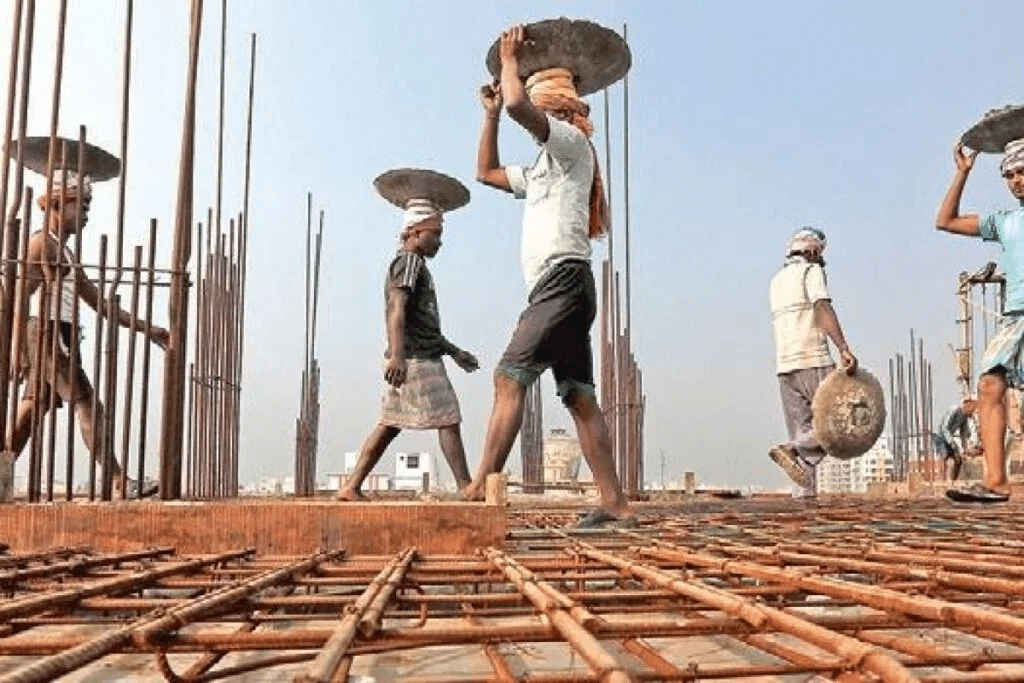The construction industry of India is the fastest developing field that influences the urban and rural scenery of the nation. With the increase in infrastructure projects, understanding of the rules and regulations regarding building constructions is important for the builders, developers, contractors, and even home owners. Not only compliance guarantees safety and quality, but also prevents expensive legal problems and project delays.
This Complete Guide 2026 examines the amended rules and regulations of the construction business in India, including everything from all the building approvals to the construction safety rules and regulations to ensure that the stakeholders remain consistent with the national and state-level regulations.
1. An Overview of Construction Rules and Regulations in India
The Indian building code is constructed to support sustainable development, structural stability and security of the people. The rules vary in some ways depending upon the state, and most are based upon a standardized pattern in terms of national codes like:
- 2026 Revision of the National Building Code (NBC) of India 2016
- Bureau of Indian Standard (BIS) standards of design, materials and safety.
- Environmental Protection Act (EPA), 1986 for compliance with the environment.
- Transparency in real estate projects by Real Estate (Regulation and Development) Act, 2016 (RERA).
These guidelines are the foundation of the construction rules and regulations in India, whereby all the building projects are subjected to safety, quality and legal regulations.
2. Important Rules and Regulations for Building Construction
Before commencing any project, it is important to be aware of the rules and regulations of building construction as stipulated by authorities. Some essential aspects include:
a) Land Use and Zoning Laws
Building construction can solely be done on land that has been legally authorized for construction. Each municipality has its own zoning categories which include residential, commercial or industrial.
b) Building Plan Approval
No building is supposed to be constructed without the consent of the local municipality or the urban development department. The building plan should be built according to the rule of construction that includes dimensions, setbacks, and ratios of floor areas.
c) Height and Setback Regulations
Building construction rules and regulations specify the maximum height of a building and the distance that should be maintained around the building. These depend on the kind of land and its infrastructures.
d) Fire Safety and Disaster Management
Any commercial and high-rise structure should adhere to construction safety regulations and standards associated with fire exits, fire extinguishing systems, and escape plans. Fire Department NOCs are mandatory.
e) Environmental Clearance
Projects that took vast areas or ones that involve the use of hazardous materials need to be approved by the State Environmental Impact Assessment Authority (SEIAA).
f) Occupancy Certificate (OC)
Once the structure is complete, construction officials are supposed to take out an Occupancy Certificate, to ensure that the project is in accordance with all the approved structures and construction rules and regulations in India.
3. Construction Safety Rules and Regulations in India
One of the most significant aspects of compliance is the construction safety rules and regulations. The safety of workers, engineers, and the rest of the community should be maintained.
a) Legal Framework for Safety
The regulations regarding the safety of the construction sites in India rely on the Building and Other Construction Workers (BOCW) Act, 1996 and the Central Rules of 1998. These are the laws that govern all the aspects of working, as well as compensation in case of accidents.
b) Individual protective equipment
Helmets, safety shoes, gloves and harnesses should be worn by all the workers during work at the site.These are essential according to the construction safety rules to avoid fall and heavy equipment injuries.
c) Site Safety Management
Supervisors should make sure that standards of safety such as scaffolds, appropriate lighting and emergency training are adhered to. The safety rules and regulations that are specified for the construction also require the employment of safety officers in big construction projects.
d) Training and Awareness
Before employees can be sent to work on a hazardous job, they should be trained in safety on a mandatory basis. This is in line with the construction rule that gives more emphasis to human safety and discipline in operations.
e) Reporting and Record Keeping
Under the construction site safety rules, all accidents or safety breaches must be reported immediately to the relevant authorities, maintaining transparency and accountability.
4. The Role of National Building Code (NBC)
In India, the main source of construction rules and regulations is the National Building Code (NBC). It establishes the guidelines on design, construction and maintenance of buildings.
The 2026 update of the NBC introduces modern guidelines, including:
- Integration of green building norms
- Digital permit and approval systems
- Updated construction safety rules and regulations to include AI-based monitoring tools
- Smart cities with fire and disaster resilience.
This modernization will ensure that India’s construction industry meets with the best international practices and sustainable development targets.
5. Construction Site Safety Rules: Practical Implementation
On top of the legal requirement, the implementation of construction site safety regulations guarantees the accident-free and smooth working process. The organizations can apply them in the following way:
- Risk Assessment: It involves conducting a site survey to determine the hazards present on the site and before the work has been started.
- Emergency Procedures: Have evacuation plans and emergency contacts on board.
- Waste Management: Dispose of the construction waste in a proper way as per the environmental and safety standards.
- Maintenance of equipments: The cranes, lifts and scaffolds are to be checked frequently to prevent any accidents or breakdowns.
- Access Control: Lock out unauthorized persons from high-risk areas by use of access control as per construction safety standards.
The practices will assist companies in making construction a safer and efficient business.
6. Construction Rule: Legal and Ethical Responsibility
The rule of construction in India goes beyond building design, it represents the legal, ethical, and environmental responsibility of every builder. It states that any construction activities must be structurally sound, safe to the community, and in harmony with the environment.
Compliance with the rules and regulations governing the construction of buildings implies compliance with both the letter and the spirit of the law. Long term reputation, investor confidence, and sustainable growth are guaranteed by ethical construction.
7. Punishments for Non-Compliance
Violation of construction rules and regulations in India may result in harsh penalties which include:
- Project suspension or demolition orders
- Heavy fines from municipal or state authorities
- Cancellation of licenses or approvals.
- Prosecution under the BOCW Act or Environmental Acts.
Builders ought to conduct frequent inspections of their projects and make sure that all construction safety requirements and environmental guidelines are being taken care of, in order to avoid any such problems.
8. Construction Regulations Future in India (2026 and beyond)
Technology and green innovation are defining the future of construction rules and regulations in India as the country moves forward towards smart infrastructure and sustainable cities. The rule of construction will evolve to include:
- AI-driven safety monitoring systems for real-time site analysis
- Digital building approvals and blockchain-based compliance tracking
- Green building certifications becoming mandatory for large projects
- Smart city compliance standards under national development programs
These progressions demonstrate the vision of India in 2026 which is modern, safe, and sustainable building in accordance with the international standards.
Conclusion
Knowledge and compliance with the rules and regulations of building construction are no longer optional, they are necessary for ensuring safety, sustainability, and overall success. Being a builder, developer, or homeowner, adherence to the rules and regulations concerning construction safety not only safeguards your investment but also saves lives and societies.
The civil construction rules and regulations in India are ever changing according to the emergence of new challenges and technologies. By being informed and proactive, each stakeholder will be able to play a part in making the construction ecosystem of 2026 and furthermore safer and more sustainable.
Essentially, these rules of civil construction company are not only about how to construct structures but also about responsible, safe and legal construction of structures to benefit the future of India.

